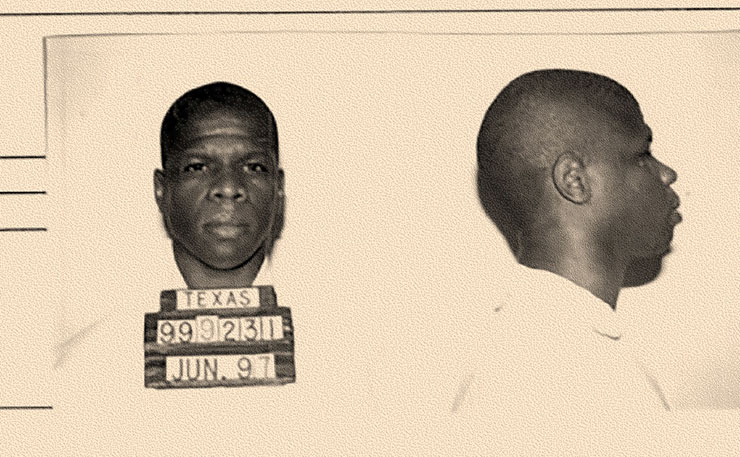A decision handed down in the United States late last week has shone a spotlight on the issue of racial bias against defendants of colour, writes Stephen Keim and Luke Craske.
In its decision in Buck v Davis, the United States Supreme Court has held that for counsel to lead evidence indicating that a client is more likely to commit future acts of violence because of his race, this does, in fact, violate that client’s constitutional right to the effective assistance of counsel.
Although some readers may be surprised that this issue was such a hard-fought point of contention, the Court’s opinion has served to expose lingering problems with the role of racial and other stereotyping in the administration of justice. While Buck’s matter has, so far, had a relatively happy ending for the applicant, it begs the question: is it appropriate in any circumstance to adduce the race of a person as evidence?
In an opinion suffused with the technicalities of when and how a criminal appellant can overcome a failure to raise a good point at an earlier stage in the convoluted process, the majority opinion of the Court saw the conservative Chief Justice Roberts and acknowledged swing-vote, Justice Kennedy, form an alliance with the Court’s liberal wing – Justices Ginsburg, Breyer, Sotomayor, and Kagan. The remaining conservatives, Justices Thomas and Alito, issued a joint dissent.
Background
The applicant, Duane Buck, was convicted of capital murder in a Texas court, over the July 1995 murder of his ex-girlfriend and a male friend. Texas law specifies that the jury may only impose the death penalty if it finds unanimously and beyond a reasonable doubt that a defendant is likely to commit acts of violence in the future.
Dr Quijano, a psychologist, was called by Buck’s attorney to provide his opinion on the likelihood of Buck’s violent reoffending. Quijano considered numerous statistical factors to determine this likelihood, and despite ultimately finding Buck unlikely to reoffend, told the court that the probability was increased due to Buck being black.
Despite being fully aware of the contents of the report, Buck’s attorney, nonetheless, called Quijano as a witness.
Quijano testified that race is a known factor to predict future dangerousness. In addition, Quijano’s report was admitted into evidence, and the jury returned a sentence of death.

It came to light shortly afterwards that Texas had relied upon evidence given by Quijano in five other matters in which Quijano had also testified as to the race of a person being indicative of his or her likelihood to commit further violent crimes.
In these matters, Texas admitted error and consented to resentencing. Buck, however, was not accorded a resentencing, through his appeal counsel, as he had failed to contend that his right to effective assistance of counsel was violated in his first state post-conviction appeal.
Buck consequently sought, and was denied, federal habeas relief, for which he was then refused a certificate of appealability by the Fifth Circuit, as it was reasoned that the introduction of any mention of race was of negligible consequence to his sentence.
The Supreme Court then received a petition for certiorari in the matter, as to the inferior Courts’ finding that Buck had demonstrated neither the extraordinary circumstances of his matter, nor that his counsel had provided ineffective assistance.
Chief Justice Roberts and the Majority Opinion
The majority opinion of the Court found that the Fifth Circuit exceeded the limited scope of the certificate of appealability analysis. The certificate of appealability statute establishes a two-fold process for its operation: a determination as to whether a claim is reasonably debatable, and, if so, an appeal is the normal course.
The Court disagreed with the Fifth Circuit for deciding the case on its merits, as the first step in the operation of the certificate of appealability is merely to determine whether jurists of reason are capable of debating an issue, as opposed to whether or not Buck had demonstrated his matter to be extraordinary.
The majority was further satisfied that Buck had, in fact, demonstrated ineffective assistance of counsel. It was found that Buck’s trial counsel were entirely aware that Quijano’s report reflected the view that Buck’s race rendered him predisposed to violent conduct, and that the primary point of dispute during the sentencing was Buck’s future dangerousness.
Buck’s counsel nonetheless not only called upon Quijano, but, specifically, elicited testimony from him as to the correlation between race and violence. In the forceful words of the Court, “No competent defense attorney would introduce evidence that his client is liable to be a future danger because of his race”.
It was further found that the conduct of Buck’s counsel, in having called upon Quijano’s evidence, was prejudicial in nature. That is, there was “a reasonable probability that, but for the counsel’s unprofessional errors, the result of the proceeding would have been different”. The majority was satisfied that it is reasonably probable that but for Quijano’s testimony as to race and violence, at least one juror would have harboured a reasonable doubt as to Buck’s chance of violent reoffending.
This issue required jurors to make a speculative judgment. Yet Buck’s race was not subject to speculation. Quijano’s testimony stated that this immutable characteristic carried with it an increased probability of future violence, which the majority determined to have potentially appealed to a puissant racial stereotype, which may have been valued by the jury as the opinion of a medical expert bearing the Court’s imprimatur.
For these reasons, the conclusion that the mention of race during the trial was of negligible import was rejected.
Broader Issues and Implications
Whatever the case may be as to the legal implications of this matter, it is nonetheless particularly noteworthy as symptomatic of institutional injustices faced by minorities around the globe. For race to be a factor as to whether or not a person will live or die – or to be a factor at all in legal proceedings – is abhorrent and frightening.
No matter the racial demographic of criminals, it is resoundingly against the interests of justice for a person to be punished for the actions of other members of a particular racial group.
The six cases in which Dr Quijano testified do not on their own constitute an overwhelming indication of explicit racial bias in the American legal system, but the fact that Quijano’s testimony was called by Mr Buck’s own counsel indicates a lack of awareness of their own racial bias among those charged with advancing a defendant’s best interests.
A genuinely dangerous aspect of this matter is that opinions which feed into powerful racial stereotypes and caricatures are being presented as persuasive medical fact.
Conclusion
For an issue so ingrained as latent racial biases, concerted longitudinal educational efforts may be the only viable solution. This is a policy, however, which is unlikely to be actively promoted within the education system by a Trump administration.
Of great present interest is the role that Chief Justice will play under a Trump administration. Many were surprised when Chief Justice Roberts rejected a challenge to the Affordable Care Act in National Federation of Independent Business v Sebelius (commonly known as the “Obamacare case”). In that case, the Chief Justice found himself voting with the more progressive of his colleagues in what was a landmark decision. In doing so, the Chief Justice showed that he is unafraid of conservative criticism. Buck v Davis is another example, in another vexed area of the law, of Chief Justice Roberts forming part of a strong liberal majority.
The current administration seems to believe that it can create a Supreme Court in its own image. That may turn out to be more difficult than it imagines. When a President shows no respect for the rule of law, traditional judicial divides may lose some of their relevance.
This recent decision of Buck v Davis may yet be a harbinger of things to come in the new Trump reality.
Donate To New Matilda
New Matilda is a small, independent media outlet. We survive through reader contributions, and never losing a lawsuit. If you got something from this article, giving something back helps us to continue speaking truth to power. Every little bit counts.





